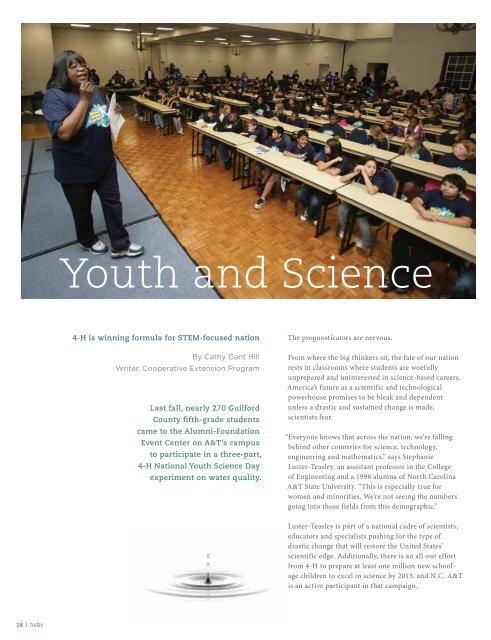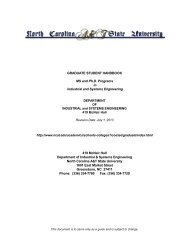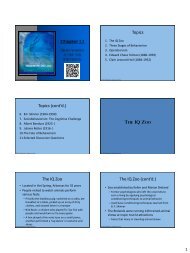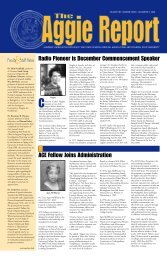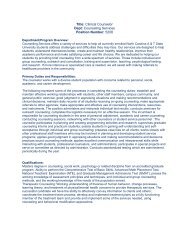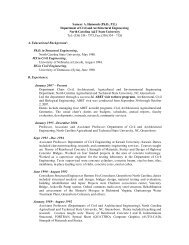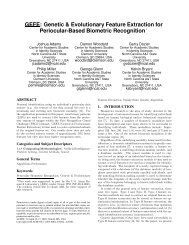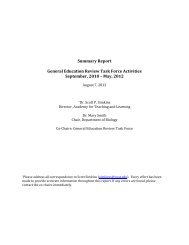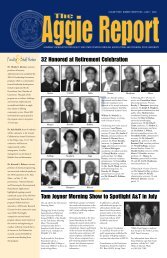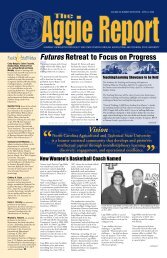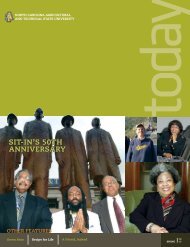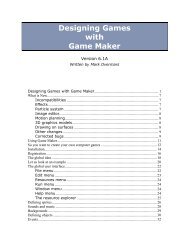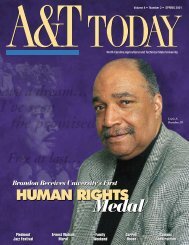STRAIGHT TO THE TOP - North Carolina A&T State University
STRAIGHT TO THE TOP - North Carolina A&T State University
STRAIGHT TO THE TOP - North Carolina A&T State University
You also want an ePaper? Increase the reach of your titles
YUMPU automatically turns print PDFs into web optimized ePapers that Google loves.
Spring<br />
2K<br />
11<br />
Youth and Science<br />
Last fall, nearly 270 Guilford County fifthgrade<br />
students came to the Alumni-Foundation<br />
Event Center on A&T’s campus to participate in<br />
a three-part, 4-H National Youth Science Day<br />
experiment on water quality – an experiment that<br />
was created by A&T scientists from across three<br />
disciplines and schools. The local children were<br />
part of an international corral that also conducted<br />
the A&T-created experiment on the same day:<br />
3,000 <strong>North</strong> <strong>Carolina</strong> students as well as youth<br />
in 46 other states and U.S. territories, and at<br />
such international U.S. military bases as those in<br />
Antarctica and South Korea.<br />
Any way you look at them, the statistics on science<br />
achievement are disturbing. Only one in five<br />
American high school seniors is skilled in science,<br />
according to a science assessment exam. Or put<br />
another way, a whopping 80 percent of American<br />
high school seniors do not have a good grasp of<br />
science skills. It’s no longer a question of whether<br />
the beaker is half empty or half full; the hard truth<br />
is that the beaker is close to empty.<br />
<strong>North</strong> <strong>Carolina</strong> Agricultural and Technical<br />
<strong>State</strong> <strong>University</strong> is among the first landgrant<br />
universities that competed to design<br />
the experiment and is the first land-grant<br />
HBCU to win the competition. In addition<br />
to the honor of winning, A&T’s status as<br />
the experiment designer also allows the<br />
university’s logo to appear on national and<br />
international marketing materials.<br />
4-H is winning formula for STEM-focused nation<br />
By Cathy Gant Hill<br />
Writer, Cooperative Extension Program<br />
Last fall, nearly 270 Guilford<br />
County fifth-grade students<br />
came to the Alumni-Foundation<br />
Event Center on A&T’s campus<br />
to participate in a three-part,<br />
4-H National Youth Science Day<br />
experiment on water quality.<br />
The prognosticators are nervous.<br />
From where the big thinkers sit, the fate of our nation<br />
rests in classrooms where students are woefully<br />
unprepared and uninterested in science-based careers.<br />
America’s future as a scientific and technological<br />
powerhouse promises to be bleak and dependent<br />
unless a drastic and sustained change is made,<br />
scientists fear.<br />
“Everyone knows that across the nation, we’re falling<br />
behind other countries for science, technology,<br />
engineering and mathematics,” says Stephanie<br />
Luster-Teasley, an assistant professor in the College<br />
of Engineering and a 1996 alumna of <strong>North</strong> <strong>Carolina</strong><br />
A&T <strong>State</strong> <strong>University</strong>. “This is especially true for<br />
women and minorities. We’re not seeing the numbers<br />
going into those fields from this demographic.”<br />
Luster-Teasley is part of a national cadre of scientists,<br />
educators and specialists pushing for the type of<br />
drastic change that will restore the United <strong>State</strong>s’<br />
scientific edge. Additionally, there is an all-out effort<br />
from 4-H to prepare at least one million new schoolage<br />
children to excel in science by 2013, and N.C. A&T<br />
is an active participant in that campaign.<br />
Results from the 2009 National Assessment of<br />
Educational Progress (NAEP) show that only<br />
34 percent of fourth-grade, 30 percent of eighthgrade<br />
and 21 percent of 12th-grade students are<br />
proficient and above in science. Although the<br />
statistics are an improvement from 2005 scores,<br />
they are still low enough that U.S. Secretary of<br />
Education Arne Duncan worries about the country’s<br />
global competitiveness.<br />
“When (only) 1 or 2 percent of children score at the<br />
advanced levels on NAEP, the next generation will<br />
not be ready to be world-class inventors, doctors<br />
and engineers,” Duncan has said.<br />
This descending academic slope portends a less<br />
than stellar future for American technological<br />
advancement, except that there are rallying<br />
movements to fix the problem.<br />
Enter 4-H, which at six million adolescents is<br />
the largest youth organization in the country. To<br />
help meet its goal of preparing a million students<br />
to excel in science-based fields by 2013, 4-H<br />
established the annual National Youth Science Day<br />
and a companion science experiment. After the<br />
first experiment in 2008, the organization then<br />
invited land-grant universities around the country<br />
to compete for the honor of creating the country’s<br />
leading experiment for young people.<br />
18 | today today | 19


